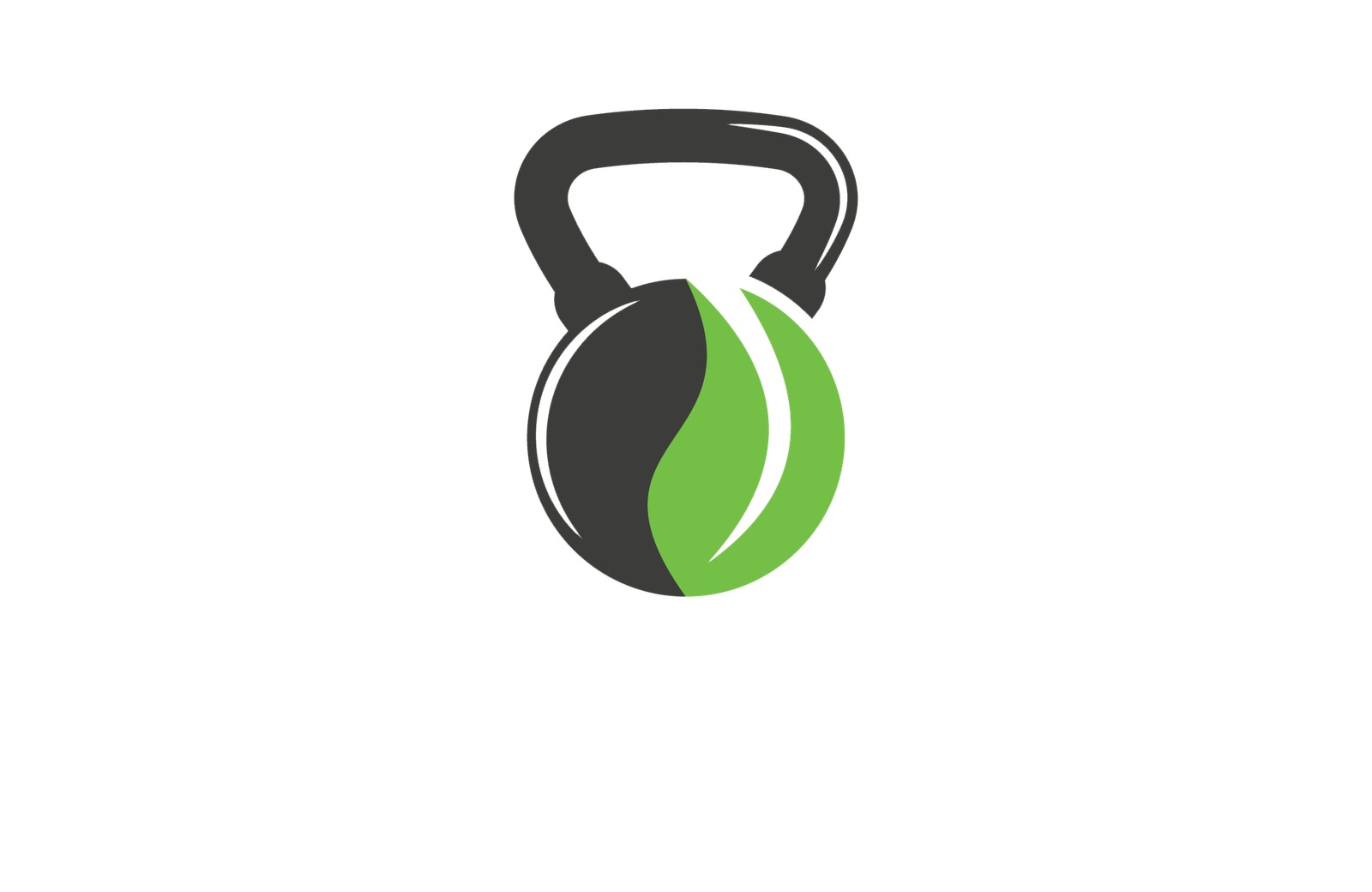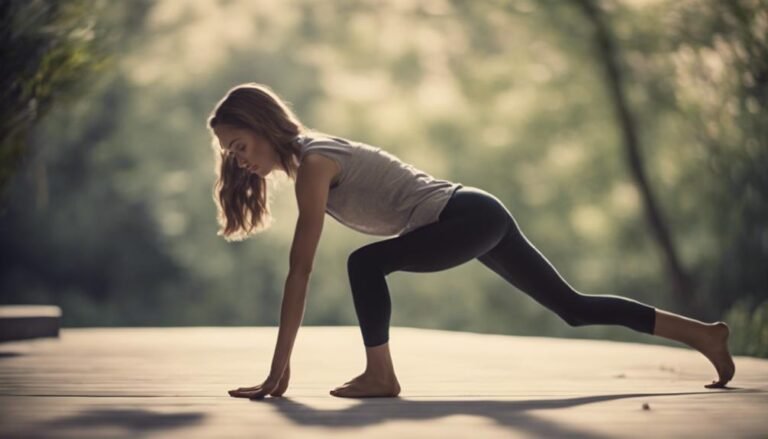Don't miss our holiday offer - 20% OFF!

Injury Prevention Tips for Home Workouts
Hone in on these essential injury prevention tips to safeguard your home workouts and stay on track to achieving your fitness goals.
We're excited to embark on home workouts, but it's clear that without the right strategies, we're putting ourselves at risk of injuries that can derail our progress and morale. That's why we're committed to warming up and stretching properly, choosing low-impact exercises, and starting slow to progress gradually. We'll focus on using proper form and technique, listening to our body signals, and creating a safe workout space. By following these injury prevention tips, we'll be able to stay safe, motivated, and on track to achieving our fitness goals – and there's even more to discover as we take our workouts to the next level.
Key Takeaways
- Warm up and stretch properly to reduce the risk of injury and improve power, speed, and agility during home workouts.
- Choose low-impact exercises that reduce joint stress and muscle tension, and start slowly to progress gradually and avoid injuries.
- Use proper form and technique to prevent injuries and target correct muscles, engaging the core to maintain good form.
- Listen to your body's signals to recognize pain thresholds and avoid pushing too far, tuning into subtle signals to prevent injuries.
- Prioritize rest and recovery to avoid burnout and prevent injuries, scheduling rest days as non-negotiable appointments.
Warm Up and Stretch Properly
When we hit the gym or the playing field, we're all keen to launch into the action, but taking a few minutes to warm up and stretch properly can be the difference between a winning performance and a sidelining injury. We've all been there – anxious to get moving, but neglecting to prepare our bodies for the exercise ahead. Don't make that mistake! A proper warm-up and stretching routine can substantially reduce the risk of injury, while also boosting our overall performance. By incorporating dynamic stretches that mimic the movements we'll be doing during our workout, we can increase our flexibility gains and activate our muscles, preparing them for the exercise to come. This isn't just about avoiding injury, though – a good warm-up can also improve our power, speed, and agility. So, take the time to get it right. We promise, it's worth it. Our bodies (and our performance) will thank us.
Choose Low-Impact Exercises
We opt for low-impact exercises that spare our joints the heavy impact of high-intensity moves, allowing us to work out smarter, not harder, and reduce our risk of injury in the process. By choosing exercises that are gentle on our joints, we can minimize joint stress and muscle tension, making our workouts more enjoyable and sustainable. This approach also helps prevent overuse injuries, which can be devastating to our fitness journey.
Here are some benefits of choosing low-impact exercises:
- Reduced joint stress: Low-impact exercises reduce the pressure on our joints, allowing us to work out without putting excessive strain on our bodies.
- Less muscle tension: Gentle exercises help to relax our muscles, reducing tension and promoting a sense of calm.
- Improved flexibility: Low-impact exercises often involve gentle stretching and movement, helping to increase our flexibility and range of motion.
- Increased endurance: By working out smarter, not harder, we can build endurance and stamina without putting excessive strain on our bodies.
Start Slow and Progress Gradually
As we begin a new exercise routine, we must remember that patience is key. We need to set realistic goals, listen to our bodies, and start with the basics to avoid injuries. By doing so, we'll be able to progress gradually and make sustainable progress towards our fitness goals.
Set Realistic Goals
Setting realistic goals is essential to our injury prevention journey, since it allows us to build momentum and confidence by achieving small victories along the way. When we set achievable goals, we're more likely to stay motivated and committed to our workout routine. Plus, it's a great way to track our progress and celebrate our successes.
Here are some tips to help us set realistic goals:
- Make it specific: Instead of "I want to get fit," try "I want to do 10 push-ups in a row by the end of the month."
- Make it measurable: Set goals that can be tracked, like "I want to run for 10 minutes without stopping."
- Find an accountability partner: Having someone to report to and stay accountable with can be a great motivator.
- Track our progress: Use a workout log or app to track our progress and see how far we've come.
Listen to Body
One of the most critical components of injury prevention is listening to our bodies and honoring their limitations, especially when we're just starting out or returning to exercise after a break. As we begin our home workout journey, we must prioritize tuning in to our body's signals and respect its boundaries. This means being mindful of our breathing, posture, and overall physical sensations. By cultivating body awareness, we can detect early signs of fatigue, discomfort, or pain, and adjust our workout accordingly.
We must remember that our bodies are unique, and what works for someone else may not work for us. So, we shouldn't push ourselves too hard, too fast. Instead, we should start slow and progress gradually, allowing our bodies to adapt to new movements and intensities. By doing so, we'll reduce the risk of injury and build a strong foundation for long-term progress. By listening to our bodies and honoring their limitations, we'll be able to work out smarter, not harder, and achieve our fitness goals without compromising our well-being.
Start With Basics
We'll set ourselves up for success by mastering the fundamentals of exercise, which means starting with simple, low-impact movements and gradually increasing the intensity and complexity of our workouts. This approach helps prevent injuries and builds a strong foundation for our home gym routine.
When we start with the basics, we can focus on proper form and technique, reducing the risk of injury. As we progress, we can gradually increase the intensity and difficulty of our workout routines.
Here are some key takeaways to keep in mind:
- Master basic exercises: Focus on exercises like squats, lunges, and push-ups, which work multiple muscle groups at once.
- Start with lower weights: Gradually increase the weight as we build strength and endurance.
- Focus on proper form: Pay attention to our posture, alignment, and movement patterns to avoid injuries.
- Listen to our bodies: Rest and recover when needed, and don't push ourselves too hard too quickly.
Use Proper Form and Technique
When we engage in physical activity, using proper form and technique is essential to preventing injuries, as it allows us to target the right muscles and avoid putting unnecessary stress on our joints. We've all been there – we get excited to try a new exercise or routine, but we don't take the time to learn proper form. This can lead to muscle imbalance, where some muscles become overworked while others are neglected. This imbalance can put us at risk for injury and hinder our progress.
To avoid this, we need to focus on core engagement. Our core is the foundation of our strength and stability, and when we engage it properly, we can maintain good form and target the right muscles. When we're doing exercises like squats, lunges, or deadlifts, we need to make sure we're engaging our core to support our movements. By doing so, we'll reduce our risk of injury and get the most out of our workouts. Remember, proper form and technique are key to getting results and staying safe. Let's make it a priority in our home workouts!
Listen to Your Body Signals
As we push ourselves to reach our fitness goals, it's essential that we pay attention to our body's warning signs. We need to recognize when we're approaching our pain threshold and know our limits to avoid pushing too far. By tuning in to our body's signals, we can prevent injuries and maintain a consistent, effective workout routine.
Pain Threshold Awareness
By tuning into our body's subtle signals, we can avoid pushing past the point of pain, reducing our risk of injury and maintaining peak physical performance. As we exercise, we must stay attuned to our body's whispers, rather than waiting for it to scream in pain. This mindfulness is key to preventing injuries and getting the most out of our workouts.
Mindfulness is crucial to preventing injuries and getting the most out of our workouts.
- Mindful breathing: Take slow, deep breaths to calm our minds and tune into our body's sensations.
- Body scanning: Regularly check-in with our bodies, scanning for areas of tension or discomfort.
- Listen to our instincts: If we feel a twinge of pain or discomfort, stop and reassess our exercise form or intensity.
- Respect our boundaries: Know when to push ourselves and when to hold back, honoring our body's limitations.
Know Your Limits Always
We set ourselves up for success by recognizing our physical limits and honoring them, which means acknowledging that our bodies have unique boundaries that need to be respected. As we begin our home workout journey, it's crucial to listen to our bodies and recognize the signs of fatigue, pain, or discomfort. Mindfulness matters, as it allows us to tune in to our body's signals and adjust our exercise routine accordingly. By being aware of our personal boundaries, we can avoid pushing ourselves too hard and risking injury.
We must remember that our bodies are not machines that can be pushed to their limits without consequences. Rather, they're delicate systems that require care, attention, and respect. When we respect our physical limits, we're able to work smarter, not harder, and make progress without compromising our well-being. By doing so, we're not only preventing injuries but also fostering a deeper connection with our bodies. So, let's make a pact to listen to our bodies, acknowledge our limits, and celebrate small victories along the way.
Rest When Needed
When we're honest with ourselves, we're aware of that moment when our bodies scream 'stop' – and it's essential we listen to those signals and take a break before injury strikes. It's easy to get caught up in the excitement of a new workout routine or the rush of endorphins, but ignoring our bodies' warnings can lead to serious consequences.
To avoid burnout and prevent injuries, we need to prioritize rest and recovery. This means incorporating mindful pauses into our workouts, taking breaks when we need them, and scheduling Self Care Sundays to rejuvenate our minds and bodies.
Here are some ways to make rest a priority:
- Schedule rest days: Treat them as non-negotiable appointments with yourself.
- Listen to your body: If you're feeling fatigued or experiencing pain, stop and reassess your workout.
- Incorporate stretching and foam rolling: Help your muscles recover and rebuild with gentle exercises.
- Prioritize sleep: Aim for 7-9 hours of sleep to help your body repair and rebuild.
Create a Safe Workout Space
To maximize our workout potential and minimize the risk of injury, we need to create a safe workout space that's free from hazards and distractions. A cluttered space can lead to tripping, slipping, or falling, which can derail our fitness journey. That's why decluttering essentials like old shoes, clothes, and other items is vital. We should also make certain that our workout space has enough room to move around comfortably.
Electrical safety is another vital aspect to address. We should keep our workout space away from electrical outlets and cords to avoid tripping or electrical shock. It's also essential to keep our workout equipment and machines at a safe distance from water sources to prevent electrical accidents. By creating a safe workout space, we can focus on our fitness goals without worrying about injuries or accidents. A well-planned space will not only boost our motivation but also help us achieve our desired results. So, let's get started on creating a safe and distraction-free workout space that supports our fitness journey!
Cool Down and Stretch Again
After a vigorous workout, our bodies crave a gentle shift to relaxation, making a cool-down routine an essential component of our exercise regimen. As we wind down, our focus shifts from pushing ourselves to the limit to gently coaxing our muscles back to a state of relaxation. This critical phase of post-workout relaxation is where we reap the benefits of our hard work and set ourselves up for effective muscle recovery.
Some key strategies to incorporate into our cool-down routine:
- Static stretches: Focus on major muscle groups like hamstrings, quadriceps, and chest muscles.
- Foam rolling: Use a foam roller to release tension in our muscles, improving circulation and reducing soreness.
- Deep breathing exercises: Calm our minds and bodies with slow, deliberate breaths, promoting relaxation and reducing stress.
- Self-myofascial release: Use tools like lacrosse balls or tennis balls to release tension in tight areas, promoting muscle recovery and flexibility.
Frequently Asked Questions
Can I Exercise at Home if I Have a Pre-Existing Injury?
"We can definitely exercise at home with a pre-existing injury, but we must disclose our injury to our doctor and consult with them to create a modified workout plan that's safe and effective for us."
What if I Experience Pain During a Workout at Home?
When we experience pain during a workout at home, we must listen to our bodies and pause – it's essential to respect our pain threshold. We don't push through, we workout smart, and prioritize recovery.
How Often Should I Rest and Recover Between Workouts?
"Like a well-oiled machine, our bodies need regular tune-ups. We prioritize active recovery, allowing our muscles to recharge like a phone on a charger. We also pay attention to our sleep patterns, ensuring we're well-rested for the next sweat session."
Can I Modify Exercises to Accommodate Physical Limitations?
We adapt exercises to fit our needs, swapping high-impact moves for gentle alternatives and incorporating progressive adaptations to guarantee a safe, effective workout that honors our physical limitations, not ignores them.
What if I Have a Medical Condition That Affects Exercise?
If we have a medical condition that affects exercise, we need to get medical clearance and follow our doctor's guidance to guarantee a safe and effective workout routine that accommodates our unique needs.
Conclusion
As we wrap up our injury prevention tips for home workouts, remember that a staggering 65% of exercise-related injuries occur during home workouts. That's a sobering statistic, but with these tips, you'll be well on your way to a safe and effective fitness journey. By warming up, choosing low-impact exercises, and listening to your body, you'll be able to reach your fitness goals without compromising your health. Stay safe, stay consistent, and see you at the finish line!



